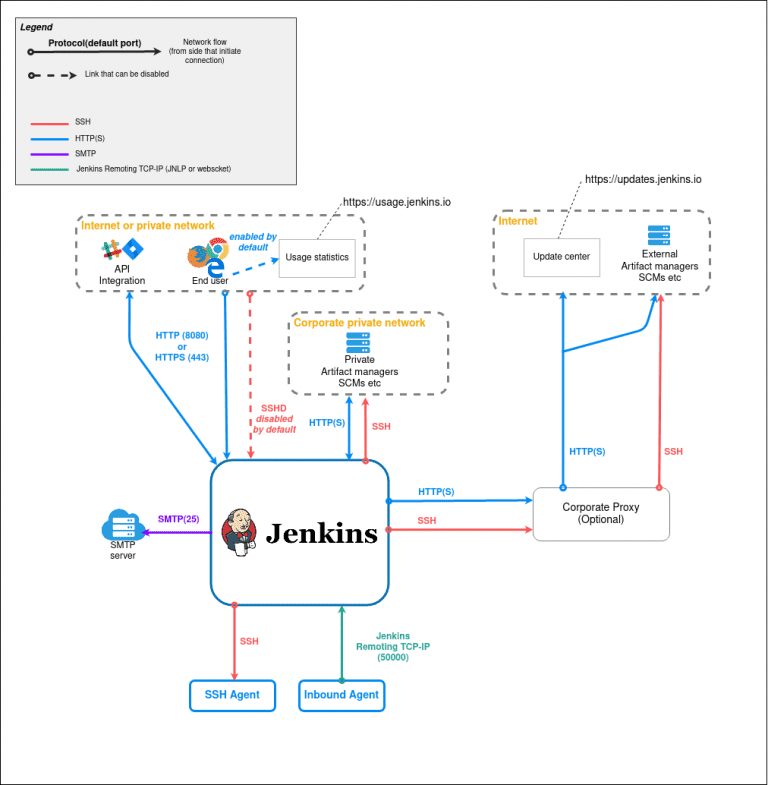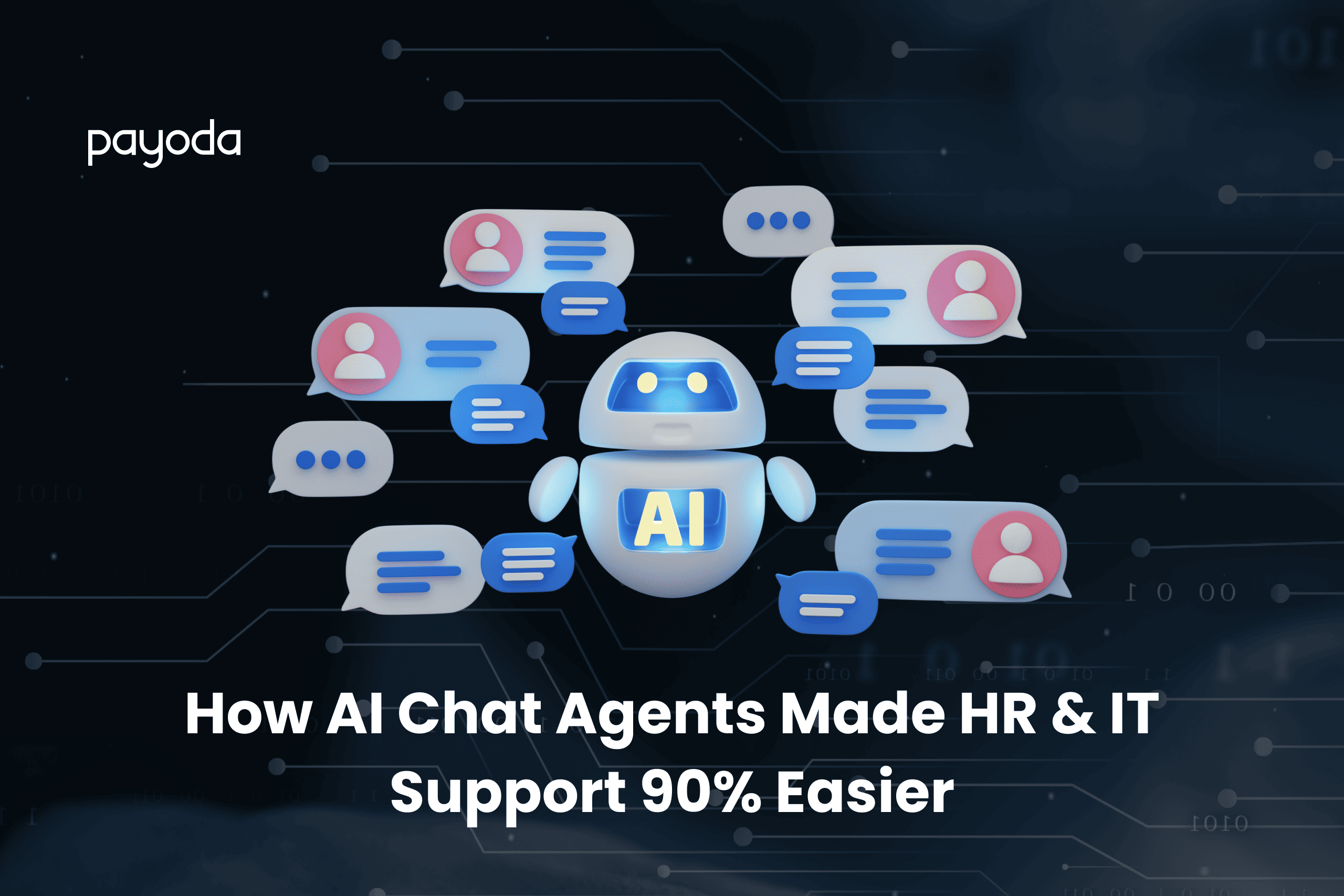Continuous Integration and Continuous Delivery (CI/CD) have become integral to modern software development with Jenkins. Jenkins is an open-source platform that serves as an automation server, enabling the implementation of continuous integration and continuous delivery (CI/CD) processes. Our article explains how Jenkins works, its architecture and use cases, and the advantages and disadvantages of using a Jenkins pipeline.
Jenkins, a Java-based open-source automation platform, serves as a robust tool for streamlining continuous integration in the software development lifecycle. Equipped with a diverse array of plugins, Jenkins facilitates seamless integration of code changes, enabling developers and DevOps engineers to deliver fresh builds efficiently. This platform is instrumental in automating various development tasks, encompassing building, testing, documenting, packaging, staging, deploying, and conducting static analysis.
Jenkins has garnered a widespread user base, with over 300,000 installations worldwide, showcasing its increasing popularity. Organizations leverage Jenkins to accelerate their software development processes by automating testing and building procedures at a rapid pace. Operating as a server-based application, Jenkins typically relies on web servers like Apache Tomcat for deployment.
So, modern software development with Jenkins is possible by providing a comprehensive and efficient platform for continuous integration, contributing to the automation and optimization of various development lifecycle tasks
Top Use-Cases of Software Development with Jenkins

When all the tests designed for a particular feature or release branch pass successfully, a Continuous Integration (CI) system like Jenkins can take the reins and automatically deploy the code to either a staging or production environment. This process is commonly referred to as continuous deployment. It ensures that changes are thoroughly validated before they are merged into the codebase.
To accomplish this, developers often use a dynamic staging environment. After the tests are green, the code is deployed to this dynamic staging environment. From there, it can be further distributed to a centralized staging system, a pre-production environment, or, in some cases, directly to the production environment when the conditions are met.
Jenkins finds valuable applications in the automation of various workflows and tasks. Consider the scenario where a developer is tasked with managing multiple environments, each requiring the installation or upgrade of specific components. In cases where the installation or upgrade process involves a significant number of steps, say exceeding a hundred, executing these tasks manually becomes prone to errors.
Rather than relying on manual intervention, an efficient approach is to leverage Jenkins. With Jenkins, you can meticulously document all the steps necessary to execute the installation or upgrade. This automation significantly reduces the time required to complete the task while minimizing the likelihood of errors during the process.
Jenkins serves as a robust Continuous Integration (CI) system that seamlessly integrates with various DevOps tools. One of its notable functionalities is its ability to notify users when a merge request becomes ready for merging. This typically occurs once all tests have been successfully passed and all other predetermined conditions have been met.
Additionally, the merge request may include insights into code coverage, shedding light on the extent to which the codebase is tested. Jenkins plays a crucial role in expediting the review process for merge requests, effectively reducing the time required by half. Code coverage is determined by assessing the number of lines of code within a component and how many of them are actually executed during testing.
By facilitating efficient merge request handling and offering transparency in the development process, Jenkins significantly enhances collaboration among team members. This ensures that the code review process becomes more streamlined and time-effective.
Before introducing any changes to software, it’s essential to navigate a complex series of processes. This is where the Jenkins pipeline comes into play, serving as the connective tissue that orchestrates a sequence of events and tasks for achieving continuous integration. Jenkins boasts a versatile collection of plugins that streamline the integration and execution of continuous integration and delivery pipelines. One of the defining characteristics of a Jenkins pipeline is its reliance on the interconnection of tasks and jobs, where each assignment depends on the successful execution of another.
In contrast, continuous delivery pipelines exhibit distinct stages: testing, building, releasing, deploying, and more. These stages are intricately interconnected, forming a cohesive continuum. A continuous delivery (CD) pipeline, therefore, comprises a series of orchestrated events that allow these various stages to function harmoniously.
Jenkins and similar Continuous Integration (CI) servers play a crucial role in code verification, particularly in enhancing test coverage. As tests run and succeed, they contribute to an improvement in code coverage metrics. This approach promotes a culture of openness and accountability within the development team.
The test results are prominently displayed within the build pipeline, serving as a visible reminder for team members to adhere to established guidelines. Much like the principles of code review, the practice of achieving comprehensive code coverage ensures that testing is a transparent and inclusive process accessible to all team members.
Jenkins plays a pivotal role in significantly enhancing the efficiency of the software development process. For instance, it can transform a command prompt code operation into a straightforward GUI button click, all thanks to its automation capabilities. This is achieved by encapsulating the script within a Jenkins task. Additionally, Jenkins offers the flexibility to parameterize tasks, enabling customization and user input. This level of automation can lead to substantial savings in code volume, often replacing hundreds of lines of manual scripting.
Furthermore, Jenkins offers support for manual testing when it’s necessary, all without the need to switch between different environments. It’s a common scenario that code, when hosted locally, may not seamlessly transition to a central system in a private or public cloud due to changes that occur during the transition process. However, Jenkins’ continuous integration capabilities provide a solution. It allows for manual testing, which involves comparing the code to the current state of a production-like environment, ensuring that it remains consistent throughout the development lifecycle.
Jenkins Software Development Architecture

The components of Jenkins collaborate and function in the following manner:
- Developers make adjustments to the source code, submitting their changes to the repository, and Jenkins generates a fresh build to accommodate the latest Git commit.
- Jenkins can operate in either “push” or “pull” mode. The Jenkins CI server can be initiated by an event, such as a code commit, or it can perform periodic checks on the repository for any updates.
- The build server compiles the code and produces an artifact. In the event of a failed build, the developer will be notified.
- Jenkins is responsible for deploying the compiled application or executable onto the test server, enabling the execution of continuous and automated tests. In the event that developers’ modifications affect the functionality, notifications are sent to alert them.
- Jenkins, when appropriate, carries out deployments to the production server in the absence of any code-related problems.
Jenkins, a versatile server compatible with Windows, macOS, Unix variants, and Linux, relies on Oracle JRE or OpenJDK, requiring a Java 8 virtual machine or newer. Typically a Java servlet in a Jetty application server, Jenkins can also run in a Docker container, offering flexible deployment options. Available in various forms, including Web Application Resource (WAR) archives, OS-specific installation packages, Homebrew packages, Docker images, and source code access.
Primarily written in Java, with some components in Groovy, Ruby, and Antlr, Jenkins operates as a standalone instance or a servlet within Java application servers like Tomcat. Featuring a web-based UI and REST API, Jenkins stores configurations in a Jenkinsfile, a plain text file using curly bracket syntax. Automating the entire development lifecycle, from integration to deployment, Jenkins interprets and executes the Jenkinsfile, triggering builds on developer commits. Jenkins supports generating files via GUI or manual coding, automating processes like user acceptance testing (UAT) using tools such as Selenium. After successful automated tests, code changes move to the main branch, generating a “golden” build. Achieving continuous delivery, exemplified by companies like Amazon, Facebook, and Google, involves deploying to production multiple times daily without manual intervention.
Efficient Software Development with Jenkins Pipelines: Streamlining CI/CD Processes

Jenkins, a cornerstone in software development with its reliance on pipelines, efficiently executes tasks in the CI/CD process. Representing a sequence of steps, a Jenkins pipeline is a collection of interconnected jobs, forming a versatile framework through plugins for Continuous Delivery integration.
In the realm of software development with Jenkins Pipelines, this technology stack accommodates various tools, facilitating hosting, monitoring, compilation, and testing of code. From integration with continuous integration servers, source control software, and build tools to automation testing frameworks, Jenkins Pipelines play a pivotal role in streamlining the software development lifecycle.
A user-defined continuous delivery approach, Jenkins Pipelines integrate plugins for distinct stages, navigating through automated building, multi-step testing, and deployment procedures. Two methods for constructing a Jenkins pipeline include direct definition through the user interface or creating a Jenkinsfile via the pipeline-as-code technique, articulated in a text file with Groovy-compatible syntax. Grasping key terminologies is essential for initiating the software development process with Jenkins Pipelines.
Final Thoughts
In conclusion, Jenkins remains a fundamental tool in the realm of continuous integration and continuous delivery (CI/CD). Its extensive plugin ecosystem, reliability, and community support make it a solid choice for many organizations seeking automation solutions. However, it’s important to consider its limitations, such as the single-server architecture, the complexity of managing plugins, and the need for custom scripting for deployment.
When implementing Jenkins, it’s essential to assess your specific needs and infrastructure. While Jenkins has been the go-to choice for years, newer CI/CD solutions that are more container-native and aligned with modern DevOps practices have emerged. Organizations should carefully evaluate their requirements and consider whether Jenkins or a more contemporary alternative better suits their goals.
In the dynamic world of software development, staying updated on CI/CD tools like Jenkins is vital. Payoda offers strategic consultations to help you navigate this landscape. We provide insights to streamline your software delivery pipelines and boost development processes. Choose Payoda for expert guidance.
Talk to our solutions expert today.
Our digital world changes every day, every minute, and every second - stay updated.









